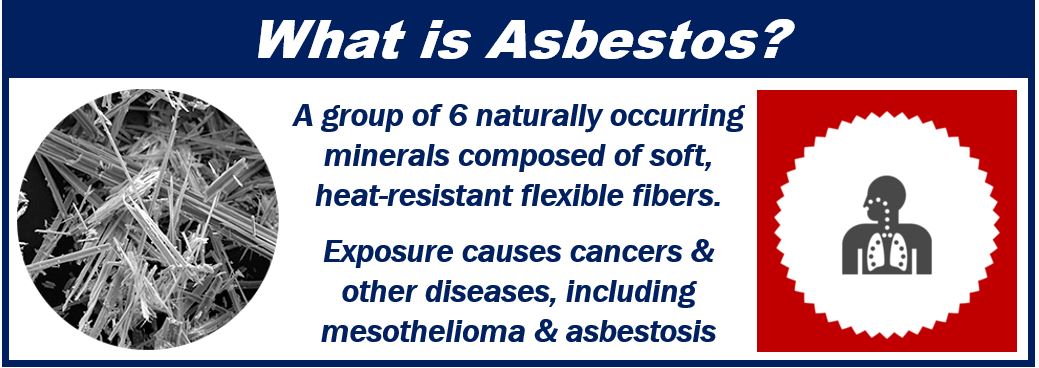Asbestos is a dangerous material that, if exposed to, can lead to a range of serious illnesses including mesothelioma, asbestos, pleural thickening, and several forms of cancer such as lung cancer. Given the serious complications of becoming exposed to asbestos, it’s important that someone does not inhale or ingest large amounts of the material. There are certain jobs where the risk of coming into contact with asbestos is greater.

Fatal Accident Claims is an experienced team of solicitors in Liverpool, UK that specialises in mesothelioma compensation after death claims. With over 30 years of experience in handling cases involving this type of claim, they know the ins and outs of what asbestos is and the complications that it can cause to a person.
Fatal Accident Claims have provided us with this guide on what asbestos is and how it affects businesses. They will provide insight into the top workplace hazards and will suggest some prevention measures that businesses can take to keep their employees safe.
What Is Asbestos?
Asbestos is a group of natural minerals that are made of microscopic fibres As the minerals are resistant to heat, electricity and corrosion, they have several benefits which means they were previously identified as a very useful and efficient material. Asbestos used to be commonly used in the construction industry when building properties and could be found in insulation, flooring and roofing.
The dangers of asbestos were not previously known, but following the risks being identified, the UK government and several other countries have banned the minerals from being used. That said, there are still some buildings constructed before 2000 where asbestos may still be present. Asbestos becomes a dangerous substance when it is inhaled or ingested. However, the risk only appears if the material containing the minerals becomes broken.
The affects of asbestos-released diseases do not show up instantly and in fact, it could take as much as decades for symptoms to appear. It is the lunges that are mainly affected by asbestos. The four main diseases that someone may encounter as a result of asbestos exposure include asbestosis, asbestos-related lung cancer, mesothelioma and non-malignant pleural disease. These diseases can seriously negatively impact a person’s life and in the most extreme cases, lead to death.
The Key Workplace Hazards
Exposure to asbestos is not extremely common and for most people it is not something worth worrying about. However, as asbestos is still present in some buildings, there is always a risk of exposure should the material containing the minerals become damaged. The fact that symptoms take years to show and exposure comes in the form of airborne particles, in many ways it is a silent killer.
Asbestos exposure is more common when someone is at work, especially if the work involves working on a property. For that reason, carpenters, plumbers, electricians, asbestos miners, painters and builders are more at risk of becoming exposed. In these situations, they may either damage a material containing asbestos minerals or come into contact with asbestos that has already been damaged. The risk is greater if you have breathed in asbestos while working for an extended period of time.
Steps Businesses Should Take for Prevention
If you work in an industry where exposure to asbestos may be a possibility, its important to take steps that will mitigate the risk of exposure. It is the responsibility of employers and employees to follow a series of regulations and procedures when managing the risk of asbestos in order to protect themselves and others.
It’s essential that businesses complete a risk assessment and also calculate the risk of anyone who could potentially be exposed. Anyone who is to work within the building should have an accurate list that informs them of where asbestos materials are and their condition. A plan should be formed that outlines how the risk will be managed, which could include wearing personal protective equipment and being extra cautious when working with asbestos materials.
Video – Mesothelioma
Interesting related article: “What is Compensation?“

